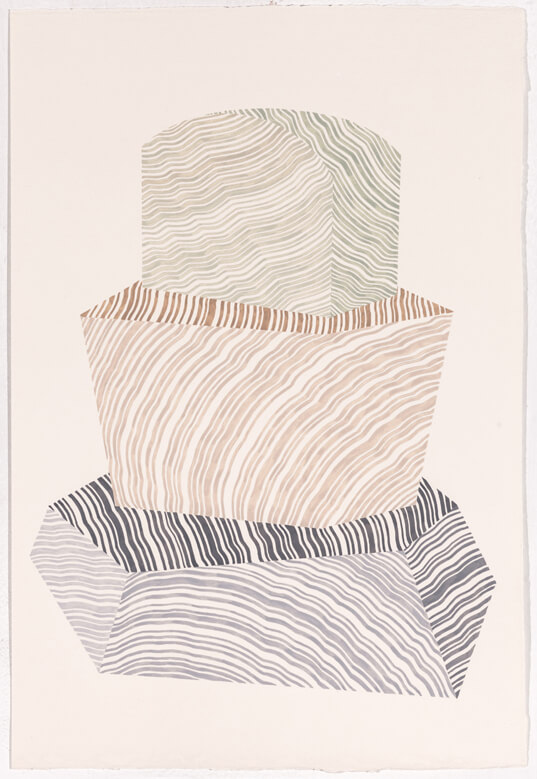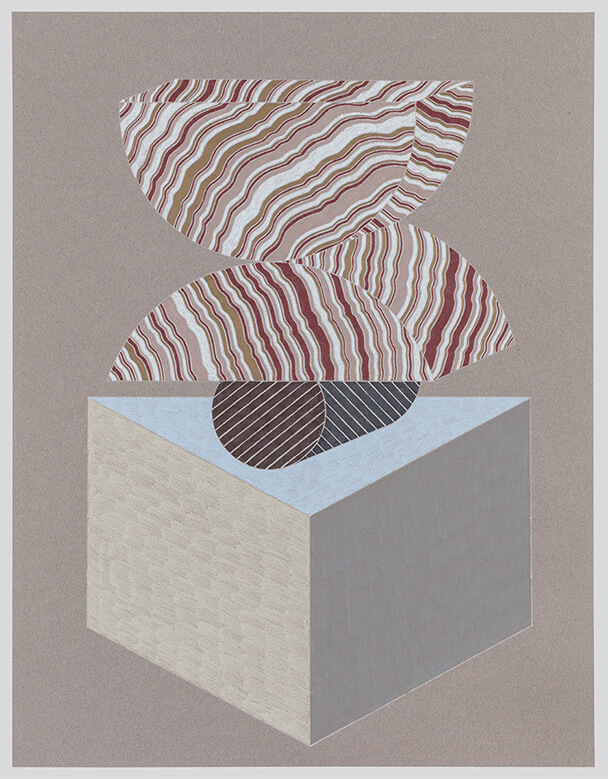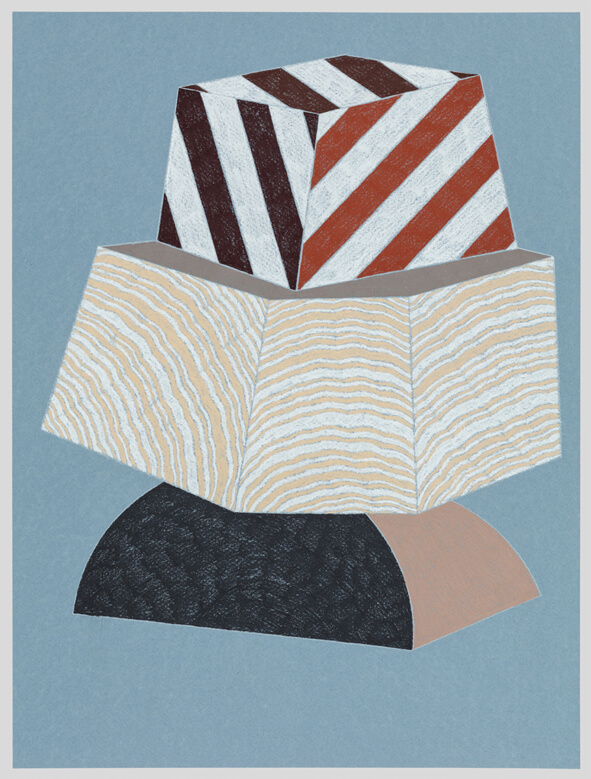Karin Haas: Sculptural Lines


Your drawings have a geometric order or balance to them but a fluidity in the lines and freedom in the hand. Tell me how you approach your work and what leads to your large scale.
My approach to drawing is to apply spatial studies that play with form and distortion. These aspects are broken down and put back together in an unlikely pattern, but still, they maintain a balance of alluring and intricate detail. I am interested in how these patterns and colors move together between the natural and abstract fields, articulating a fluctuating tension that eases and tightens. I mainly work large scale because I consider it a challenge and I enjoy the physical process.

Recently, you added sculpture. Did that feel like a natural progression from your drawings?
My drawings look like objects and so it does feel natural to move towards sculpture. During the process of creating the sculptures I can get a little frustrated because it takes so much time to plan and sketch before I can actually begin to create. This feels like a completely approach to drawing where I can be more spontaneous with my ideas.

There is a marble-like fluidity to your spherical objects on paper. Do you develop these and see them eventually as sculptures? They are such large scale drawings that they live pretty comfortably on their own.
Honestly, I have been interested in making sculptures for a long time but couldn’t decide how I wanted to show my ideas. It’s important to me that my work progresses and changes naturally. Right now is the perfect time to translate my drawings into sculpture while I continue to create colored pencil drawings. My hope is that eventually my sculptures will be just as playful as my drawings.

What part of your work feels the most unfamiliar or familiar to you? How has the work evolved or changed in the past year or so?
Currently, the steps to making the sculptures are unfamiliar and the process is a new way of thinking for me but that’s what makes it exciting. The strongest development over the past few years would be my use of color. For a while I only made graphite drawings and eventually switched to drawing with pastels on bright colored paper to force myself to loosen up and to uncover more options within my process. I wanted to narrow down my ideas and push my patterns and lines to a minimal state while focusing on more movement within a still life. I continue to build on these ideas and I feel that my work is constantly evolving because I am constantly exploring.

What is your studio practice and how do you create your work?
I work from home, which I really like. If I’m working on art, my days are fairly routine. I wake up at 7:00am, make coffee, and eat a light breakfast. I like to start working around 8:00am and depending on deadlines, I will work through the day until 5:00 or 6:00pm. Right now my focus is on color pencil drawings. I don’t sketch. I just start drawing on a large sheet of paper and make changes along the way. Even if I have a vision of what the final piece is going to look like, there is a good chance it will change and that is exciting to me.
Where will 2017 take you?
I don’t know but I am excited to find out.
Who should Frontrunner profile next?










